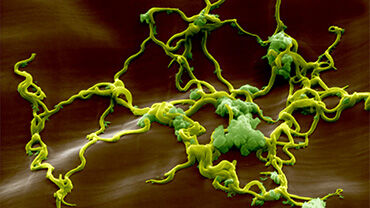Multi-source analysis reveals latitudinal and altitudinal shifts in range of Ixodes ricinus at its northern distribution limitArchived
There is increasing evidence for a latitudinal and altitudinal shift in the distribution range of Ixodes ricinus.
Jore S1, Viljugrein H1,4, Hofshagen M1, Brun-Hansen H2, Kristoffersen AB1,5, Nygård K3, Brun E1, Ottesen P3, Sævik BK2, Ytrehus B1.1 Norwegian Veterinary Institute, Oslo, Norway2 Norwegian School of Veterinary Science, Oslo, Norway3 Norwegian Institute of Public Health, Oslo, Norway4 Centre for Ecological and Evolutionary Synthesis (CEES), University of Oslo, Oslo, Norway5 University of Oslo, Oslo, NorwayParasites & Vectors 2011 May 19;4(1):84.
BACKGROUND: There is increasing evidence for a latitudinal and altitudinal shift in the distribution range of Ixodes ricinus. The reported incidence of tick-borne disease in humans is on the rise in many European countries and has raised political concern and attracted media attention. It is disputed which factors are responsible for these trends, though many ascribe shifts in distribution range to climate changes. Any possible climate effect would be most easily noticeable close to the tick's geographical distribution limits. In Norway- being the northern limit of this species in Europe- no documentation of changes in range has been published. The objectives of this study were to describe the distribution of I. ricinus in Norway and to evaluate if any range shifts have occurred relative to historical descriptions.
METHODS: Multiple data sources - such as tick-sighting reports from veterinarians, hunters, and the general public - and surveillance of human and animal tick-borne diseases were compared to describe the present distribution of I. ricinus in Norway. Correlation between data sources and visual comparison of maps revealed spatial consistency. In order to identify the main spatial pattern of tick abundance, a principal component analysis (PCA) was used to obtain a weighted mean of four data sources. The weighted mean explained 67% of the variation of the data sources covering Norway's 430 municipalities and was used to depict the present distribution of I. ricinus. To evaluate if any geographical range shift has occurred in recent decades, the present distribution was compared to historical data from 1943 and 1983.
RESULTS: Tick-borne disease and/or observations of I. ricinus was reported in municipalities up to an altitude of 583 metres above sea level (MASL) and is now present in coastal municipalities north to approximately 69°N.
CONCLUSION: I. ricinus is currently found further north and at higher altitudes than described in historical records. The approach used in this study, a multi-source analysis, proved useful to assess alterations in tick distribution.
VBORNET comment: 30/9/2011
Evidence for spread of Ixodes ricinus in Europe is limited, although there is much anecdotal evidence. It is known from other studies in Europe that the range and distribution of Ixodes ricinus is expanding to higher latitudes and higher altitudes. This study in Norway presents the first contemporary data available for the country and using a range of sources of data, has provided good evidence of both an increased in the distribution of Ixodes ricinus, both in latitude (69°N) and altitude (~580m). These are significant changes, and mimic those that have been reported in other parts of Scandinavia. This multi-source approach is indicative of an innovative approach to gathering data on vector distributions. There are a variety of indicators that can act as a surrogate for tick distribution data and other countries should follow this example. The paper is a very valuable contribution and we will include the published information in the VBORNET database on Ixodes ricinus.





